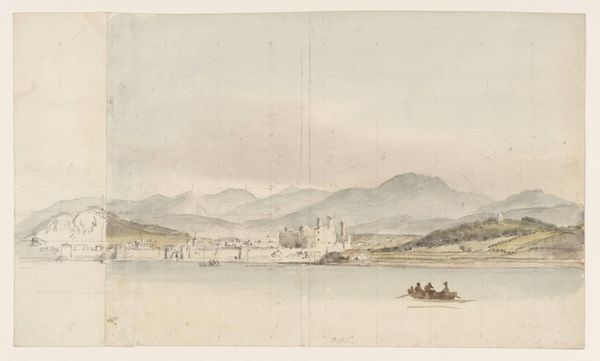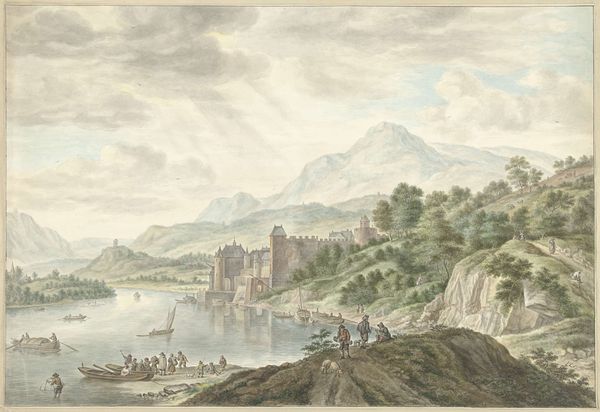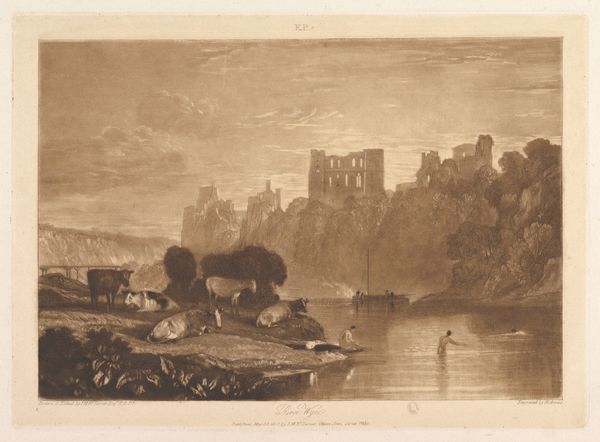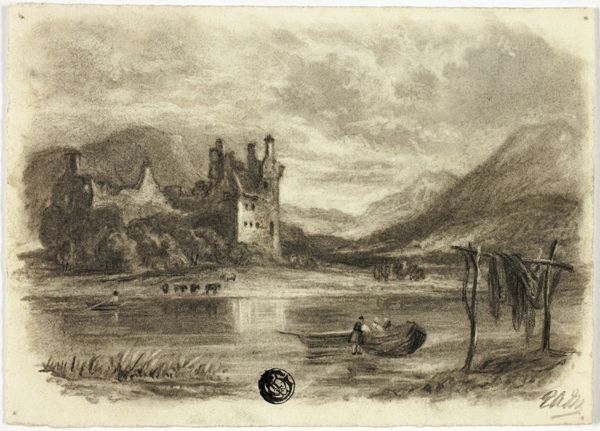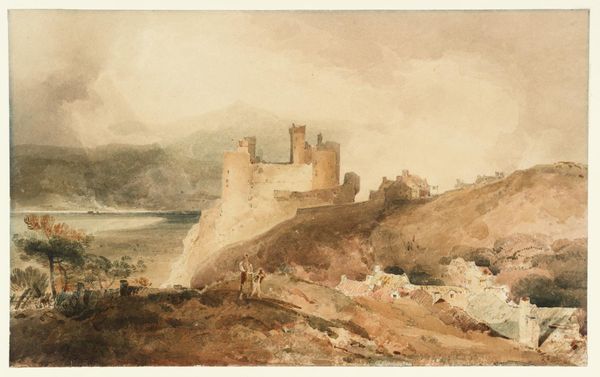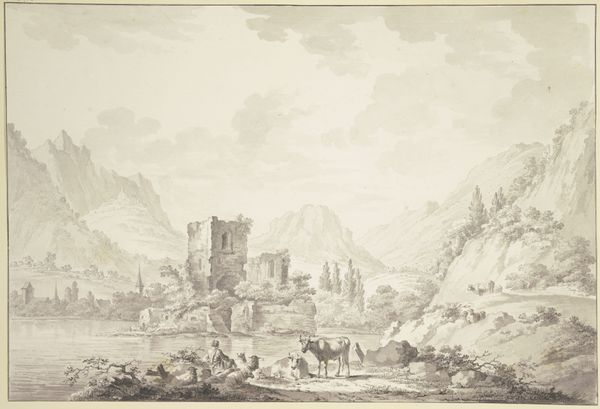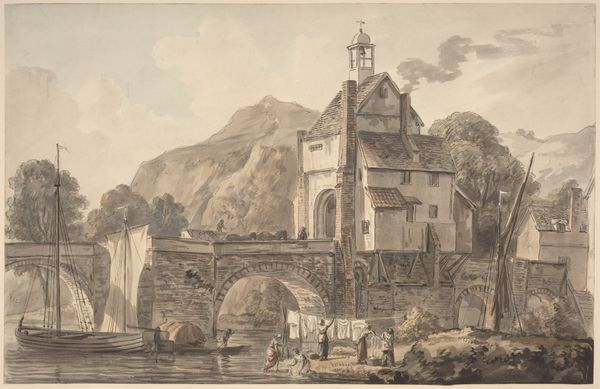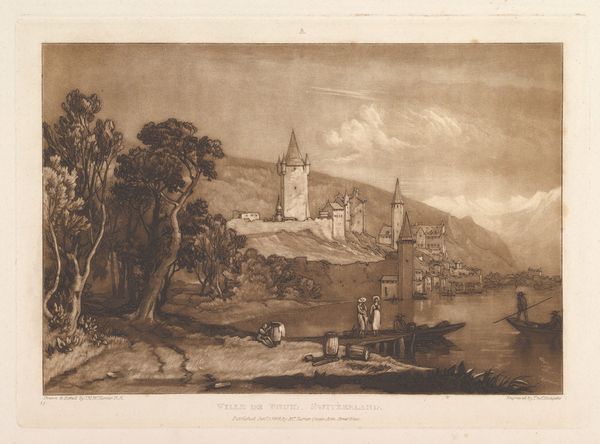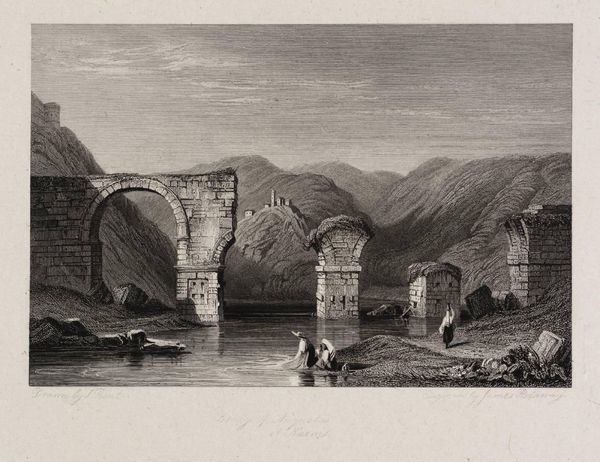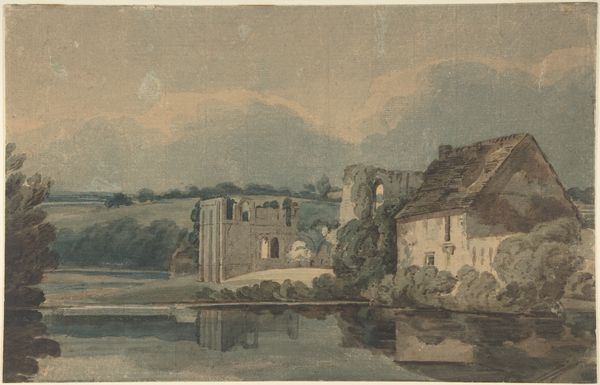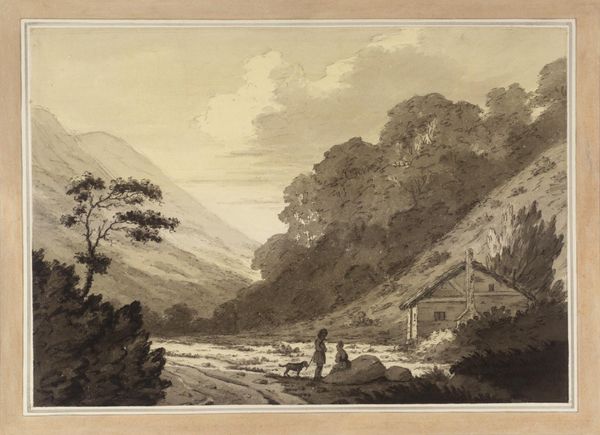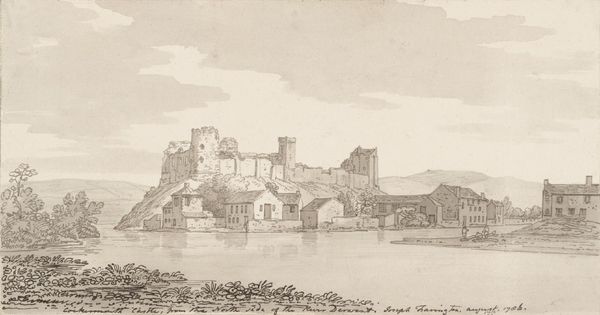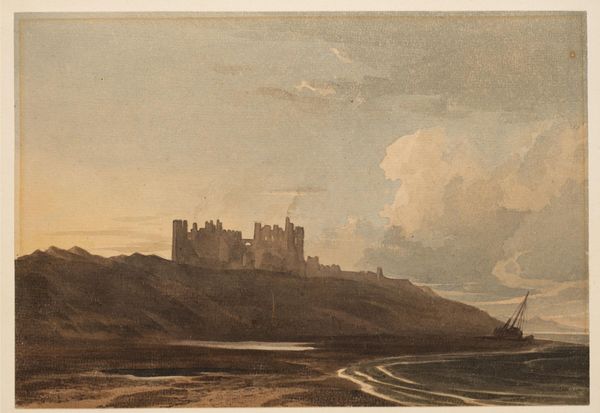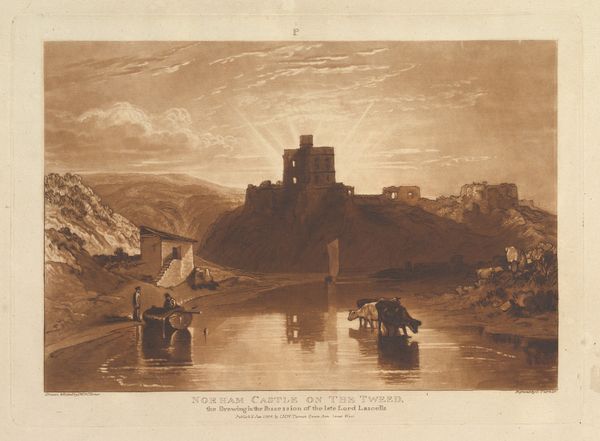
Dimensions: support: 316 x 440 mm
Copyright: CC-BY-NC-ND 4.0 DEED, Photo: Tate
Curator: Let's turn our attention to "Bedlam Furnace, Coalbrookdale," a work on paper by Edward Dayes. Editor: It feels so bleak, almost spectral. The monochrome palette really evokes a sense of abandonment. Curator: Dayes, active in the late 18th century, often captured architectural scenes. Here, he presents the industrial site in a rather unsettling light. The furnace dominates the landscape. Editor: Yes, and its position looms over the boats in the river. It is a powerful symbol, of the industrial revolution's disruptive impact on traditional livelihoods. The furnace almost looks like a gothic castle. Curator: Indeed. The image speaks volumes about shifting power dynamics. It's not just a record; it's a commentary on societal change. Editor: It's a stark reminder that progress often comes at a cost. The light almost feels ominous, illuminating what’s been lost. Curator: This piece is a great example of how art captures the anxiety of progress. Editor: Definitely. It’s a conversation starter about the past and our present.
Comments
tate 8 months ago
⋮
http://www.tate.org.uk/art/artworks/dayes-bedlam-furnace-coalbrookdale-d36352
Join the conversation
Join millions of artists and users on Artera today and experience the ultimate creative platform.
tate 8 months ago
⋮
Bedlam Furnace was perhaps named after the noise and smoke it pumped out, or the ‘hell-fire’ sermons of a local Methodist preacher. The word ‘Bedlam’ had come to mean uproar and confusion, after the Bethlem psychiatric hospital in London. Turner bought this watercolour in 1833. It had been owned by Dr Thomas Monro, a physician known to Turner’s family. Turner had studied and copied drawings from Monro’s extensive art collection at his informal evening ‘academy’ for young artists in 1793–4. Gallery label, October 2022
